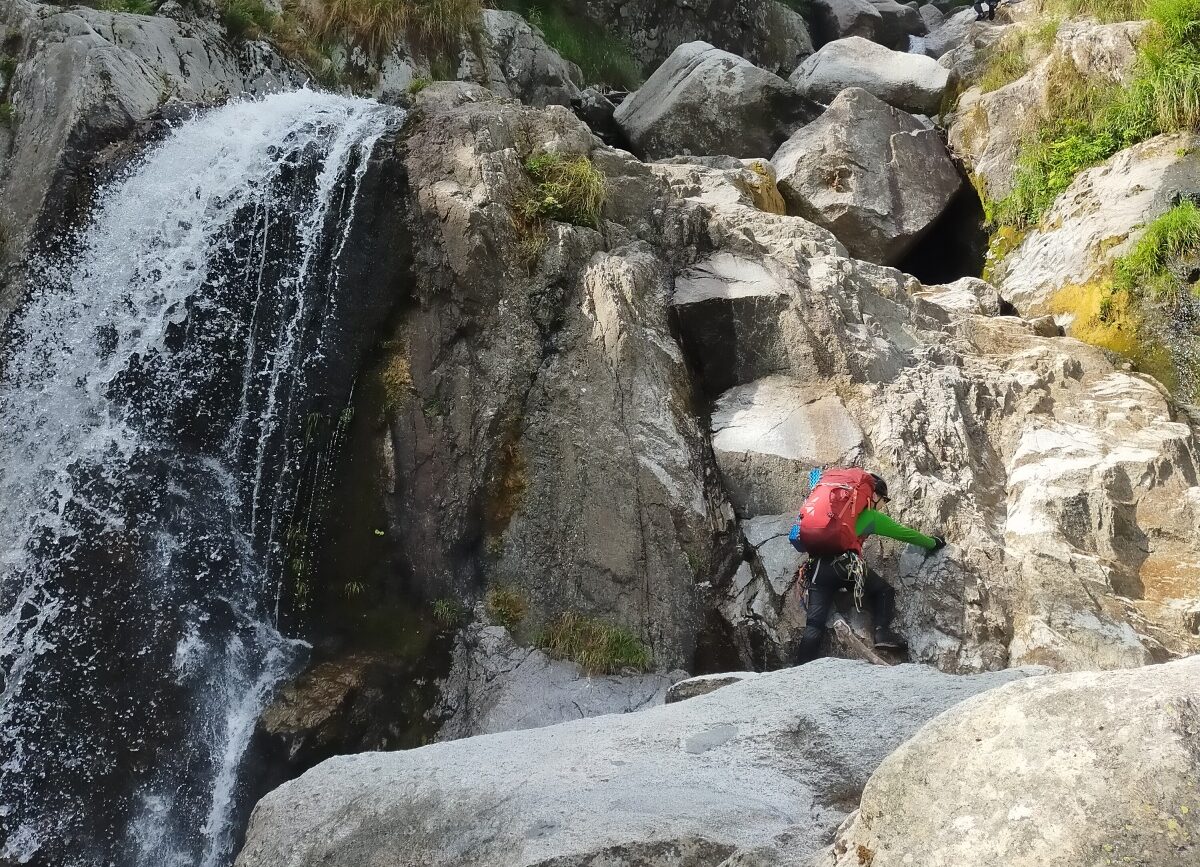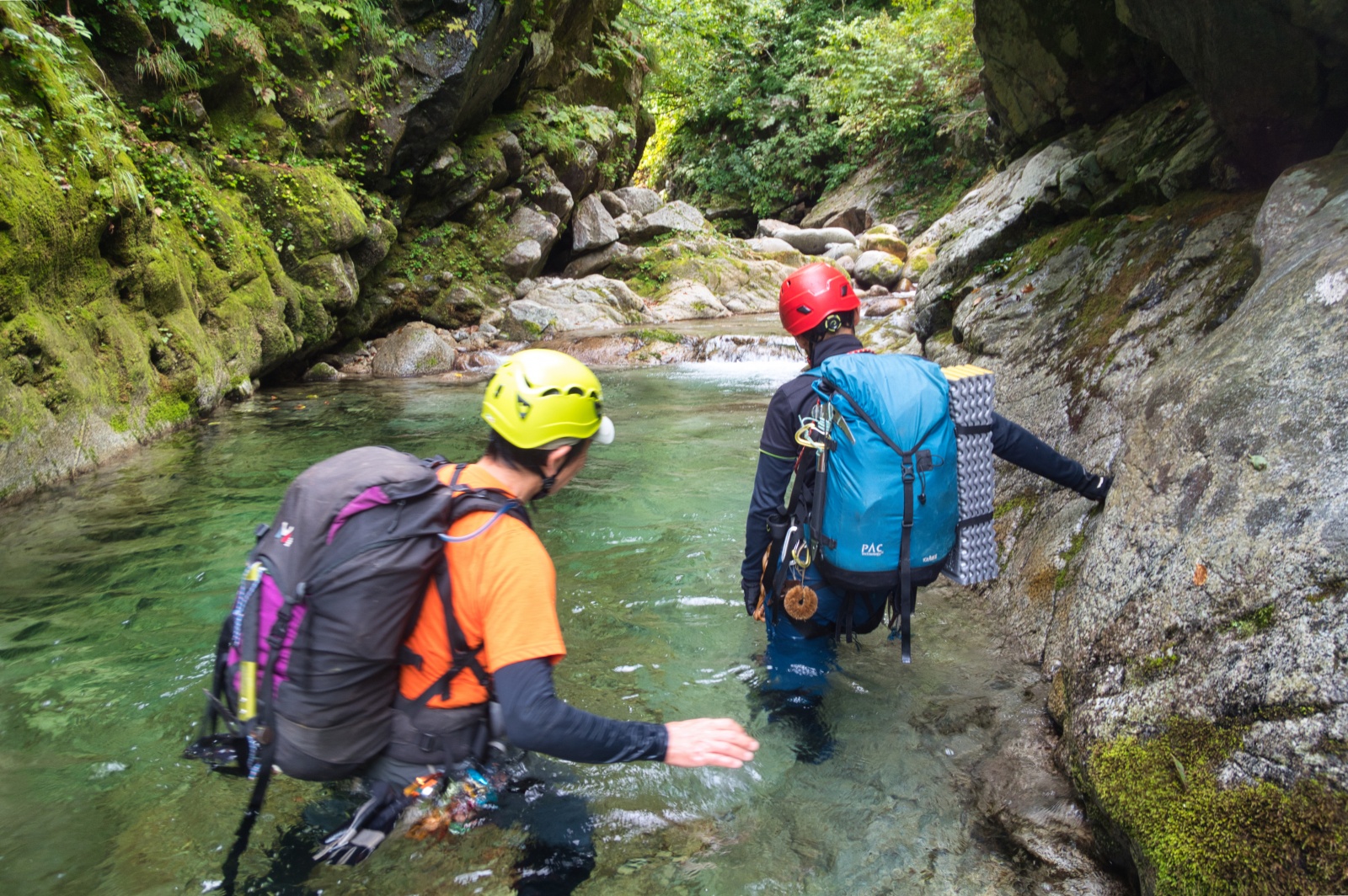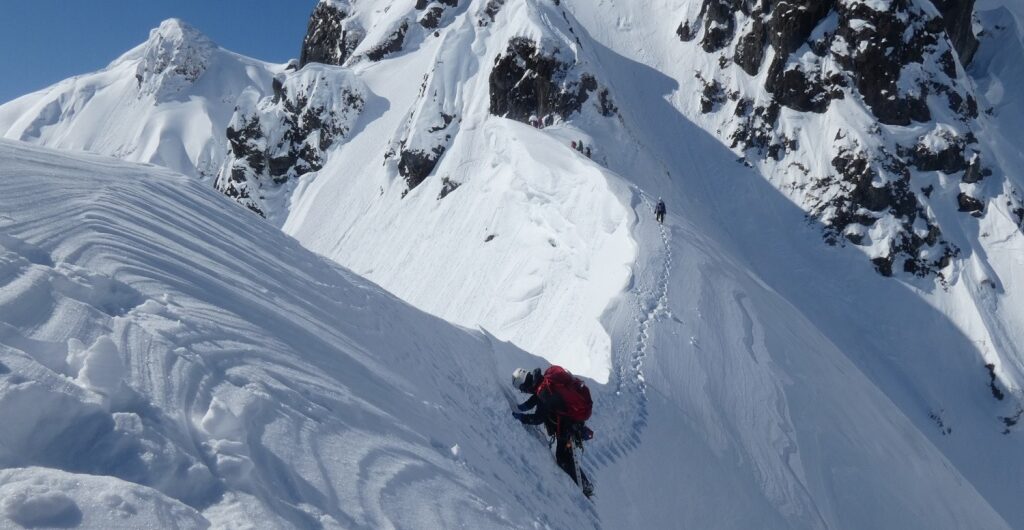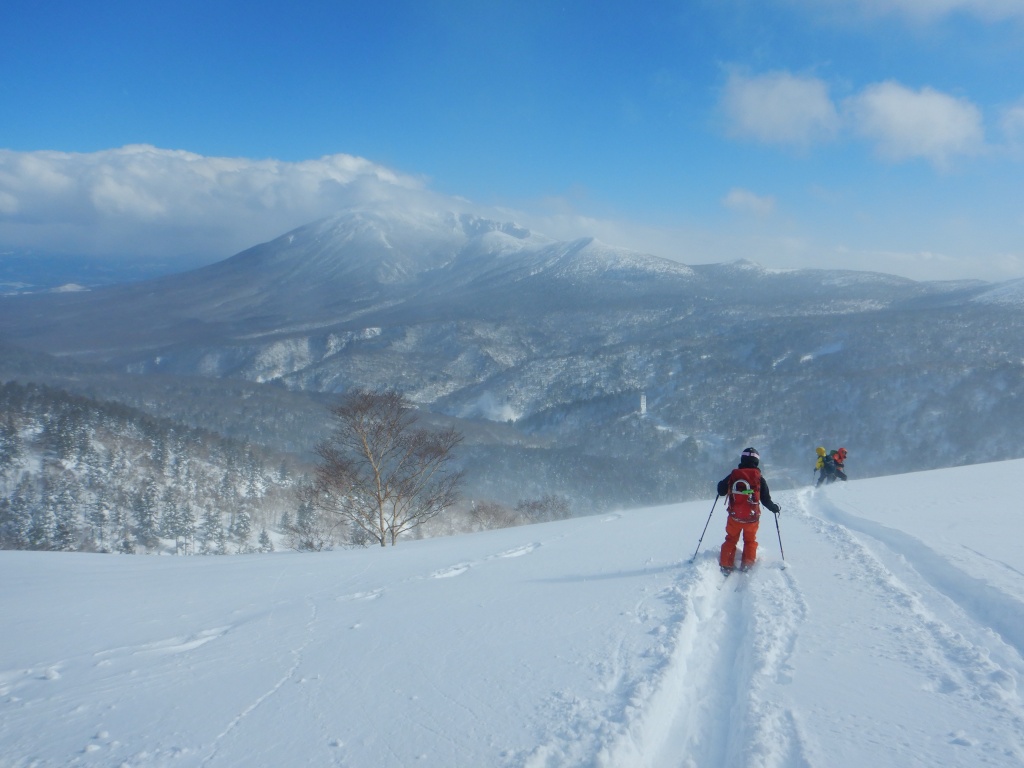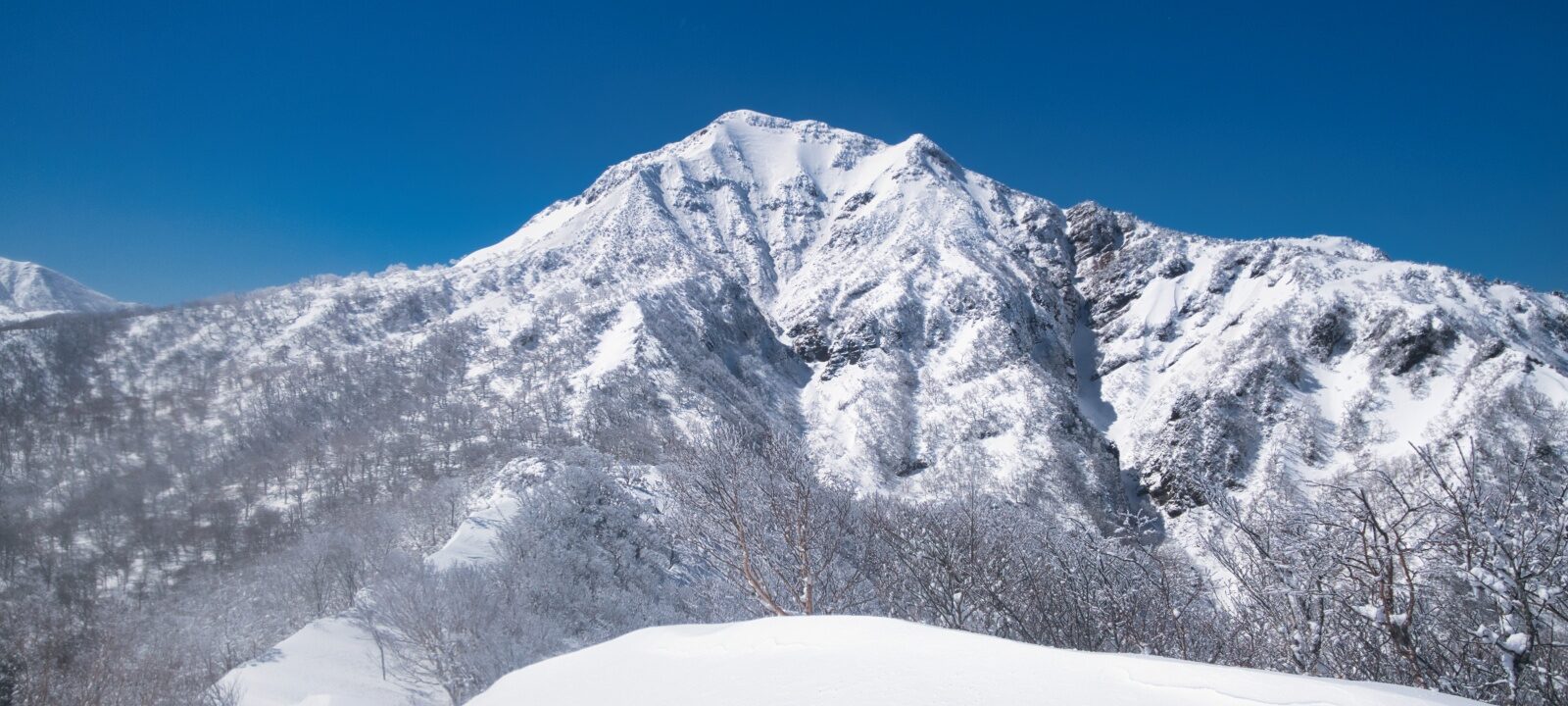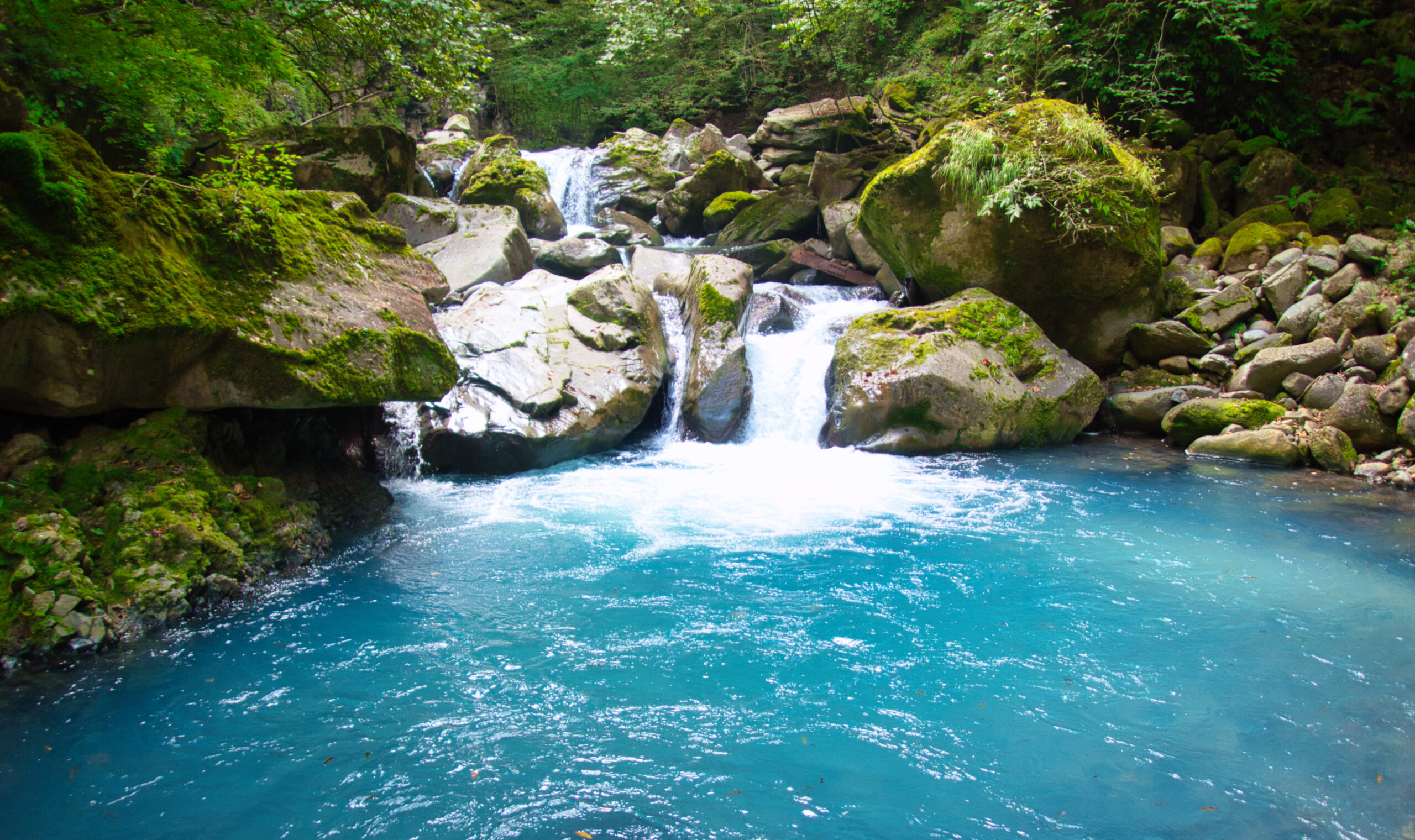【Deep Dive Chronicle】Mount Nyūgasa: Highland Dialogue Reached by Gondola
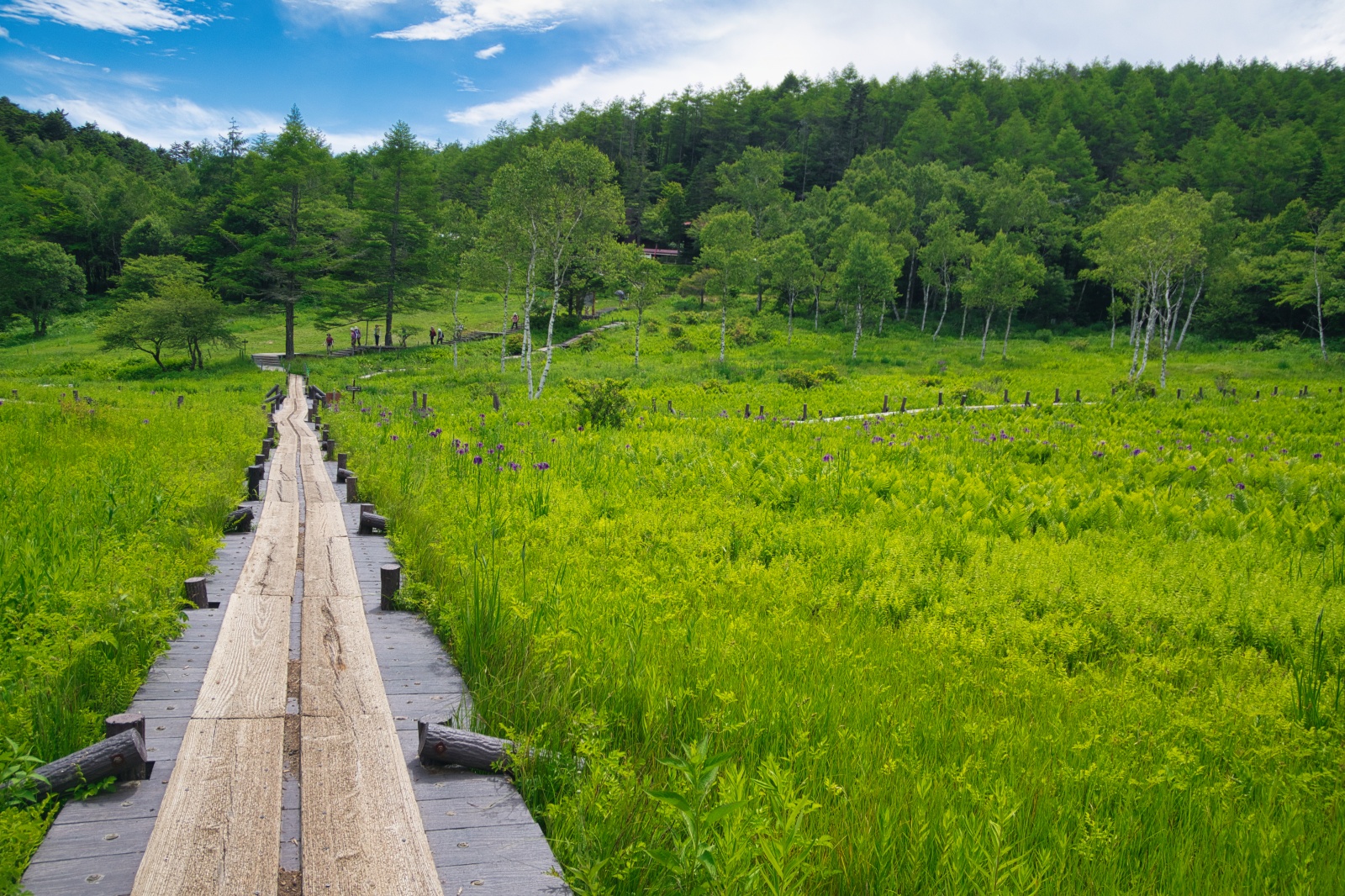
July in Shinshū (Nagano Prefecture) was enveloped in dense, lush greenery and damp, cool air. This journey is a record of a gentle one-day trek around Mt. Nyūgasa (Nyūgasa-yama, 1,955m), which is designated both as one of the Hana no Hyakumeizan (One Hundred Mountains of Flowers) and one of the Nihon Sanbyakumeizan (Three Hundred Famous Mountains of Japan). I sought a dialogue with the mountain’s tolerant side of nature, a facet distinct from the ruggedness it sometimes displays.
目次
Part One – The Cloud-High Paradise Carried by Gondola
Journey’s End
The bus that departed from Fukushima Station at 5:30 AM on the morning of Thursday, July 6th, continued its long journey along the Tōhoku Expressway (Tōhoku-dō) and Chūō Expressway (Chūō-dō). The long-distance travel left us feeling weary, but as the scenery outside the window shifted from rural foothills to deep mountain ranges, our inner anticipation rose. Our destination was Mt. Nyūgasa in Nagano Prefecture. This mountain, bearing the title of a “Mountain of 100 Famous Flowers,” welcomes many hikers with its gentle profile. As the guide, it was my mission to safely lead this large group.
By the time we arrived at the base station of Fujimi Panorama Resort (Fujimi Panorama Resort Sanroku-eki), the clock was already advancing into the afternoon. We transferred to the convenience of modern civilization: the gondola. This method, which rapidly gains altitude to the summit station, bypasses the most fundamental part of a mountain trek—gaining elevation under one’s own power. However, this allows even those who are less confident in their physical strength to breathe the air of the summit and experience the vitality of the alpine flora. I accept this as one form of the mountain’s generosity.
The Mountaineer’s Liberation
Fortunately, the weather was clear when we disembarked at the summit station. Dense, deep greenery spread out below our eyes, and the distant mountain ranges were veiled in a blue haze. The expressions of my companions showed that anticipation for the fresh air and the magnificent view before us outweighed the fatigue of the journey.
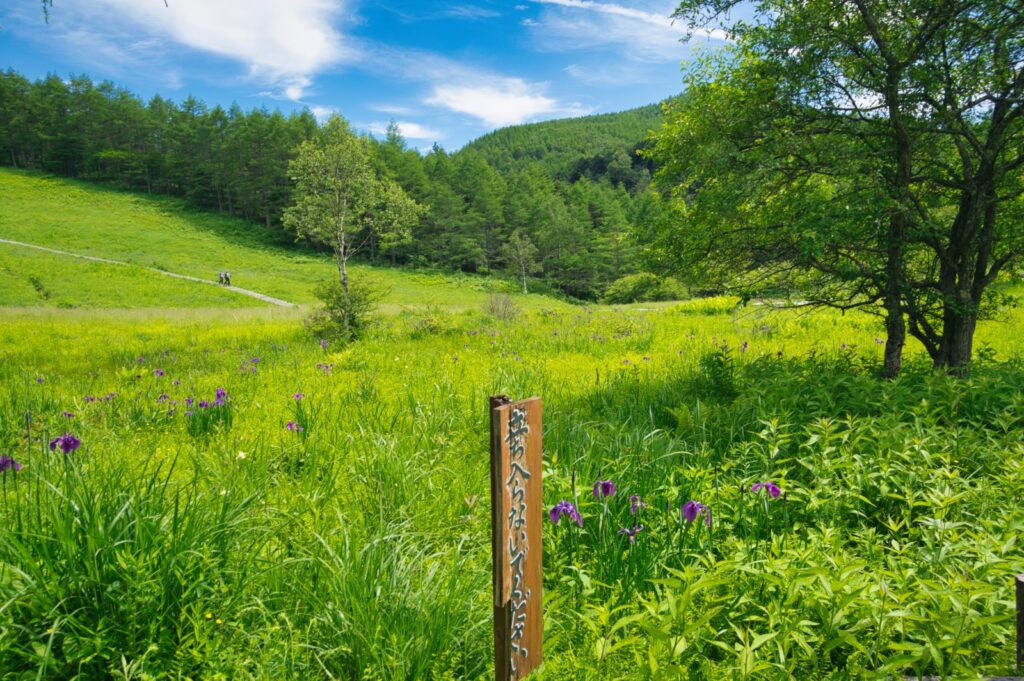
My previous mountain expeditions have often centered on battling against rugged streams or rock faces. However, Mt. Nyūgasa on this day was the very antithesis of that. The trail we were embarking upon contained neither dense undergrowth nor rocky sections, let alone waterfalls. This comfort was novel for me. In exchange for the minimal physical exertion, I gained the latitude to concentrate my five senses more deeply on the surrounding nature. This gentle ascent brought me a liberating sense of freedom as a mountaineer.
Part Two – The Poem of Life Narrated by the Flower Marsh
Humble Steps
The path aiming for the summit (1,955 meters) began from the Nyūgasa Marsh (Nyūgasa Shitsugen). After passing mountain lodges such as Yamahiko-sō and Hütte Nyūgasa, the trail gradually became gentle. The elevation gain for the day was a mere 221 meters. As this number suggests, all the participants proceeded with a light and easy gait.
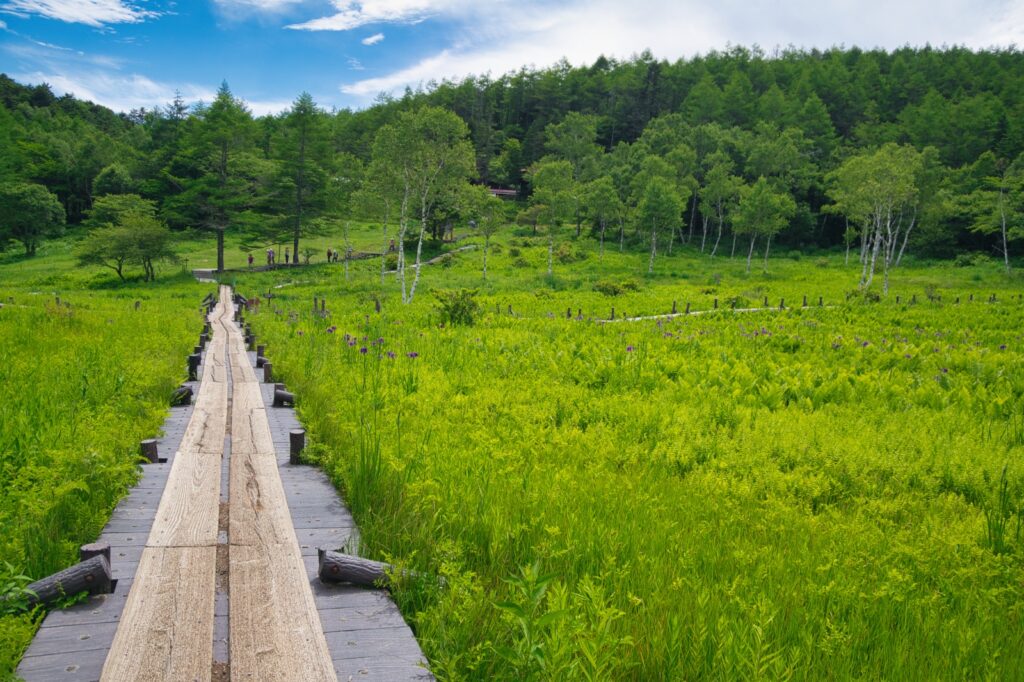
A mountain trek is an act of pursuing a specific goal, but at the same time, encountering the small lives at one’s feet is also a crucial element. Forgetting my role as a guide, I lowered my gaze with a humble spirit, along with my companions.
Soothed by the Diversity of Life
In early July, the peak blooming season for the lily of the valley (Suzuran) and the beautiful Atsumorisō (Cypripedium macranthos var. rebunense), which should have graced the marsh, had already passed. However, the mountain did not disappoint us. Even after the peak, two or three dozen varieties of alpine plants were scattered throughout the marsh and along the sides of the trail, including the delicate purplish-blue Sobana (Adenophora triphylla var. japonica), the noble presence of the Kugaisō (Veronicastrum sibiricum), and the white, star-scattered appearance of the Minear-usuyukisō (Japanese edelweiss).
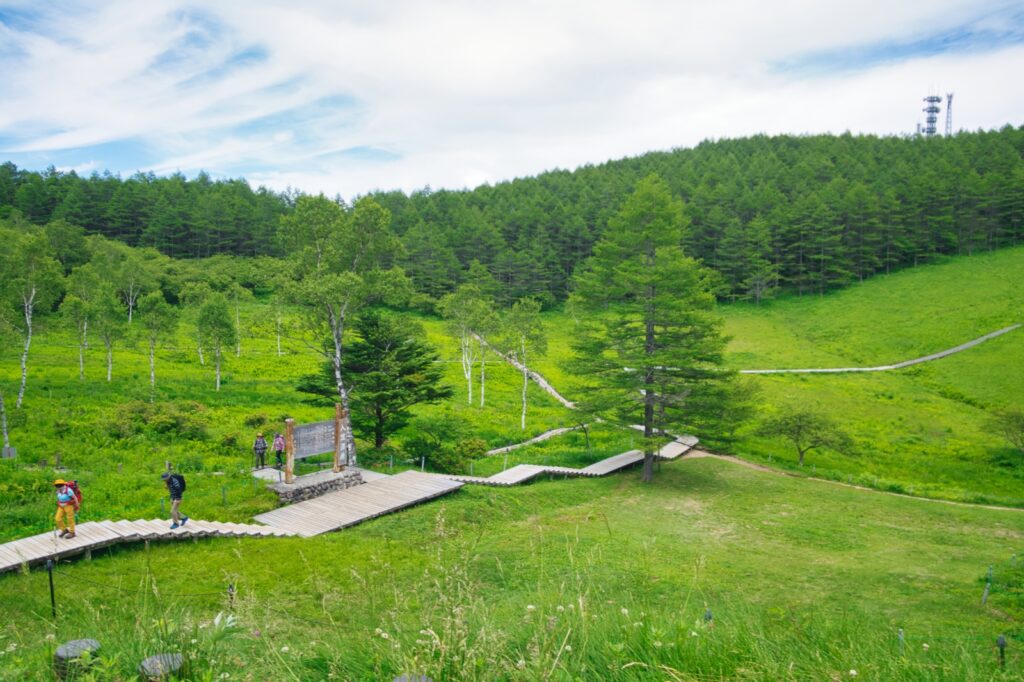
During strenuous ascents, one often loses the leisure to even look at one’s feet. But the gentle path of Mt. Nyūgasa granted me that time. The change in the vegetation underfoot, the faint breath of the moss covering the ground, and the cool, fresh breeze blowing across the marsh—the activity of these diverse lives deeply soothed our hearts. Amidst this comfortable trek, I was able to profoundly sense the mountain’s compassionate side. There were no dangerous sections on the route, and we steadily gained altitude while ensuring safety.
Part Three – The Quiet Afterglow of Alpine Flora
Eighteen Minutes at the Summit
We avoided the challenging rocky course (Iwaba Course) that leads to the summit, opting for the safe bypass route (U-turn Course), and reached the peak at 2:55 PM. Our stay at the summit (1,955m) lasted eighteen minutes. For someone leading a large group of tour participants, this limited time symbolized the climax of the day’s journey.
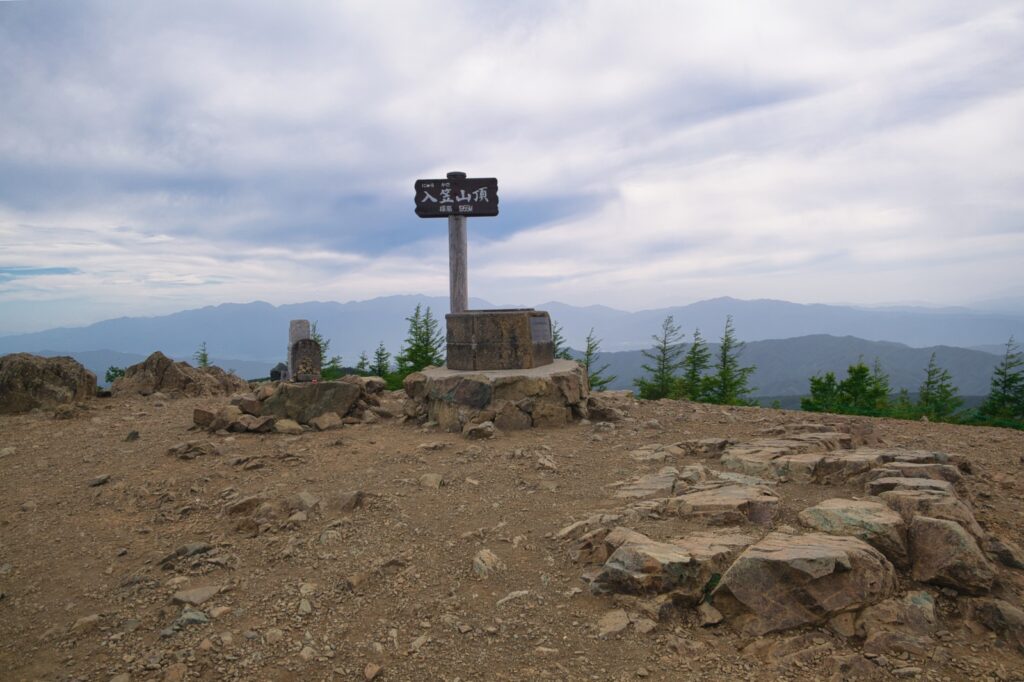
The view from the summit was superb, with the sight of distant mountains lining up being truly magnificent. This mountain offers a grand panoramic view of the Yatsugatake Mountains and the Southern Alps (Minami Alps) during the day, and at night, it boasts one of Japan’s most spectacular starry skies—so much so that a nearby mountain hut has an astronomical dome.
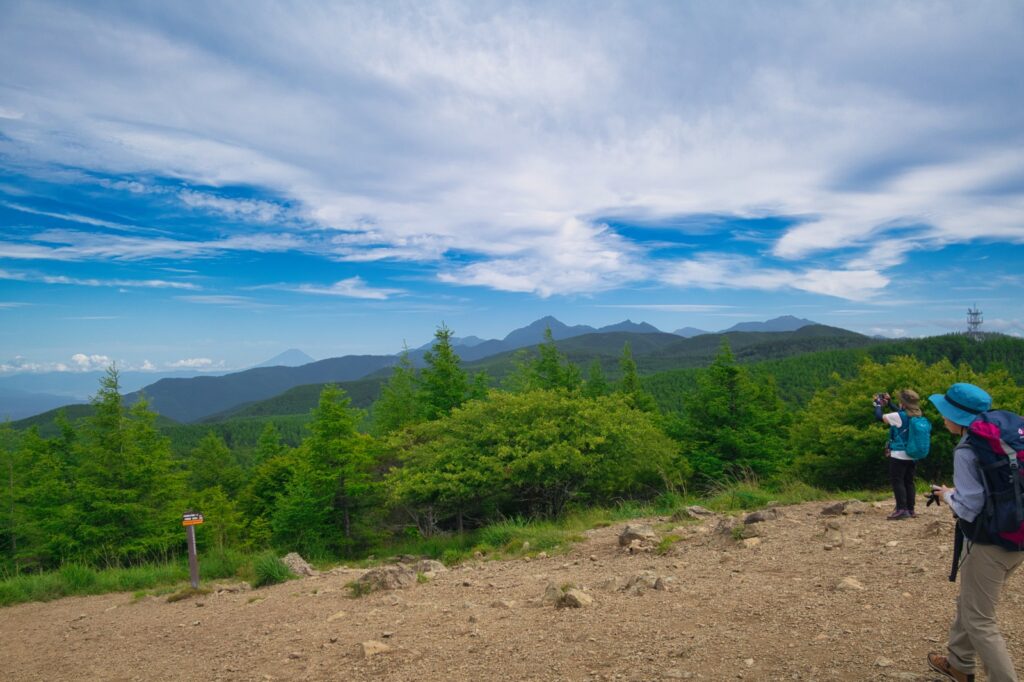
However, the true climax for me on this day may have been the quiet vitality of the flowers we encountered along the way, rather than the magnificent view from the peak. After reaching the summit, we quickly retraced our steps back to the gondola summit station.
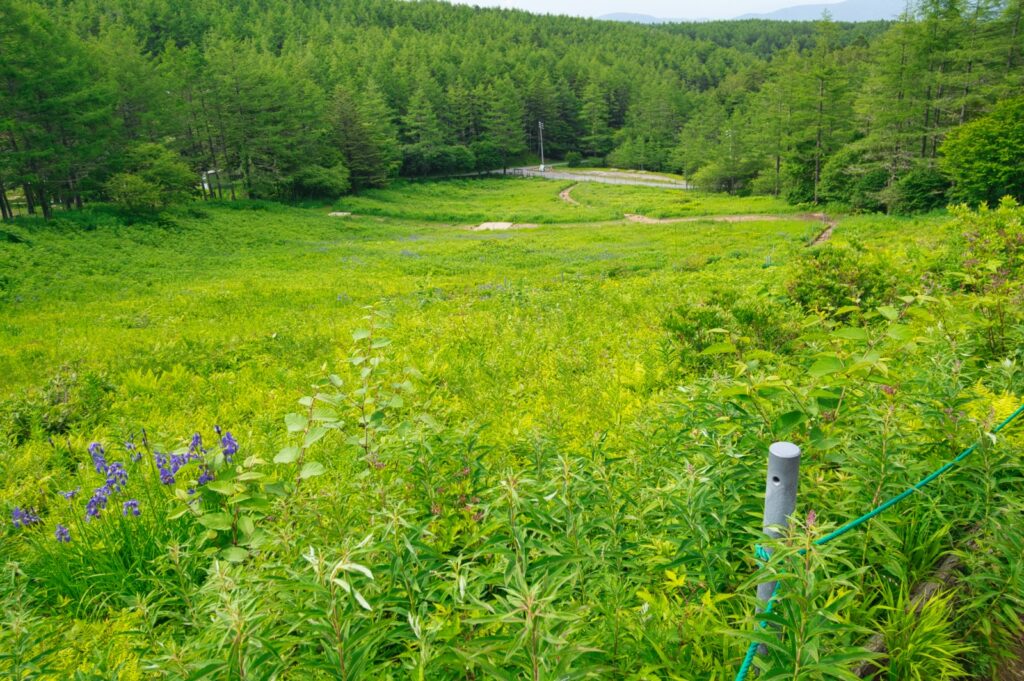
Highland Dialogue and Gratitude
After the descent, we passed through the Yatsugatake Echo Line and stopped at Shirakaba Kōgen (White Birch Highland) before moving to the hotel in Tateshina Town. I inhaled the highland air with the lingering impression of the marsh still present in my body. This day’s trek did not involve intense challenge, but precisely because of that, I was able to quietly deepen my dialogue with the mountain.
The mountain sometimes shows a fierce face, giving humanity a trial. Yet, it also possesses a side, like Mt. Nyūgasa, that gently welcomes people and reveals its abundance. This journey allowed the deep affection and reverence I hold for the mountains to evolve into something more multifaceted.
LOG SUMMARY
- Date: Thursday, July 6, 2023
- Team: 20 members (Guide, Sub-Guide W, Tour Conductor, 17 Participants)
- Location: Southern Yatsugatake Foothills, Mt. Nyūgasa (1,955m)
- Route: Fujimi Panorama Resort Gondola Summit Station → Nyūgasa Marsh → Mt. Nyūgasa (Round trip)
- Trekking Time: Approx. 2 hours 30 minutes (excluding breaks)
- Elevation Change: +221m / -221m
- Accommodation: Hotel Ambient Tateshina, Tateshina Town (Arrival: ~5:50 PM)
- Weather: Clear
- Grade: Beginner course (easy hike) utilizing gondola access. One of Japan’s 100 Famous Flower Mountains and 300 Famous Mountains.


